‘Palace of Fairies’ to ‘Lost Hill of Faces’: 12 Hidden Heritage Gems in India You Need to See!
Most travellers in India make a beeline for only a few famous heritage sites like the Taj Mahal, Hampi and Khajuraho, thus missing some of India’s most outstanding monuments. This #WorldHeritageDay, we shine the spotlight on 12 of India’s #HiddenHeritage wonders in the hope that travellers will be encouraged to get off the beaten path and take the road less travelled, literally so in this case! #InternationalDayOfMonuments
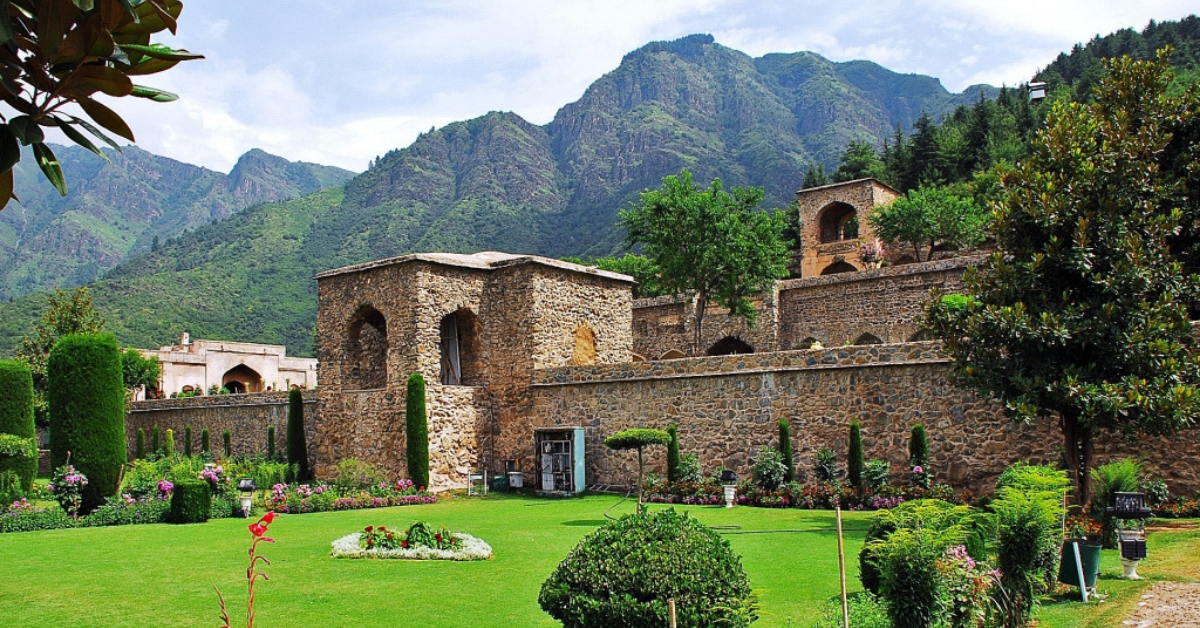
A building speaks a million words. The uniformity in the dimensions of stones and bricks that make up a monument whisper the story of the era it was built in. Whether the stone slabs are aligned perfectly or asymmetrically, the material used to set them indicates the technological advancements in the field of architecture. Frescoes, murals, mosaics on the walls and ceilings can tell you the religion of the ruler under whose patronage the monument was commissioned. The thickness of the walls shows you how vulnerable the monument was to enemy attacks.
It is in these minute details that a historical building will communicate the most to you.
If you are passionate about our country’s history and like to visit places of historical importance then here is a list of 12 lesser known monuments and sites.
From North-East India to the far South, these remnants of history will tell you tales old as time.
Pari Mahal, Jammu & Kashmir
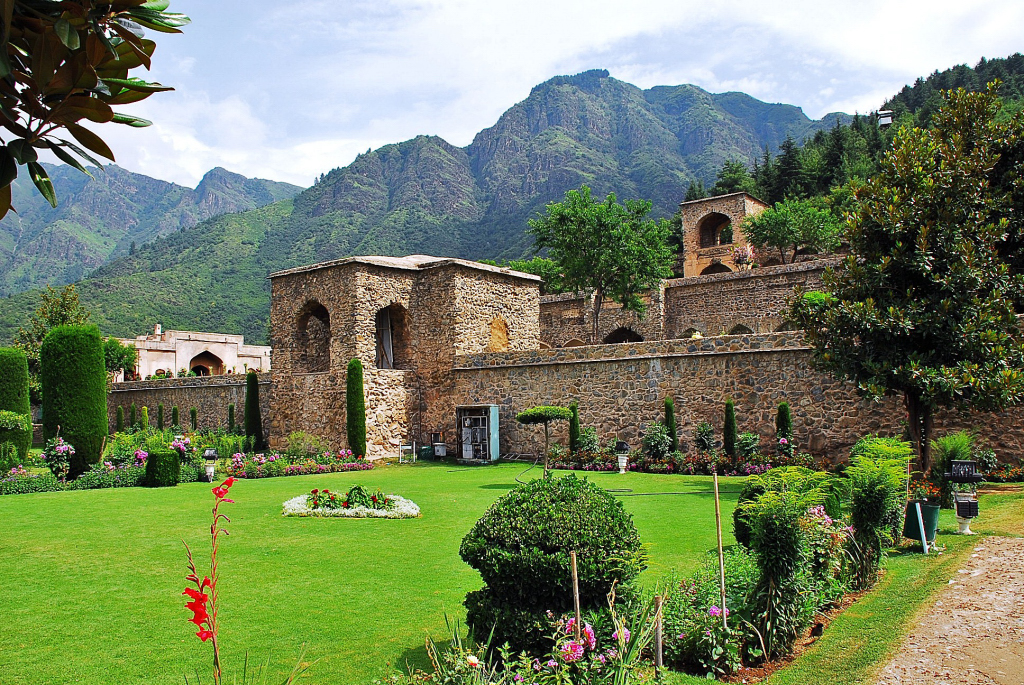
Surrounded by the mighty Himalayas and overlooking the serene Dal lake is an ancient school of astrology and is also an observatory. The Pari Mahal was built by the eldest son of Shah Jahan, Dara Shikoh, in honour of his Sufi tutor, Mullah Shah Badakhshi.
Dara Shikoh was a believer in mysticism and he combined that with his love for Kashmir to build the ‘Abode of Fairies’ in 1640 CE. Here, he would travel with learned wise men and have intense discussions about various topics.
If you happen to visit the ‘Venice of the East’, this lesser known but magnificent monument has to be on your list.
What to Do:
Srinagar offers various activities like rafting, mountain biking and skiing but your first stop has to be this garden-monument. Relax and admire the beauty of Kashmir from a great altitude at the Pari Mahal. While you’re at it, why not take some time out to know more about the Mughal emperors, their regal taste and the historic monuments, like the ‘Abode of Fairies’, that adorn India even today?
2. Qila Mubarak, Bathinda

A city that has been a part of the Indus Valley Civilisation, Bathinda, Punjab, holds a treasure that was built in the 1st century AD. The Qila Mubarak (also spelt as Quila Mubarak) was built by Raja Dab during 90-110 AD using mud bricks of the Kushana Period. It’s intact condition today, over 1900 years later, makes it the oldest fort in India to stand strong for centuries together.
Perhaps the most iconic historical memory the fort holds is when Razia Sultan, the first and only woman to rule the Delhi Sultanate, was imprisoned in it. You can read about the legendary ruler here.
If you are a passionate road-tripper, you can take your car to Qila Mubarak from Delhi or Chandigarh. It takes around 6 hours to cover the 320+ km distance from Delhi and about 4 hours to reach the heritage site from Chandigarh (distance of 230 km).
What to Do:
Don’t forget to check out the ancient bricks that were used for the construction of the fort as well as the Rajmata Palace, the Sheesh Mahal, Jail Wala Palace, the Palace of Moon, and the Palace of Colors inside the fort. The fort also has an underground sewage system and a ‘cool room’ connected to tunnels that keep the interiors cool even in the scorching heat.
3. Bidar Fort, Karnataka:
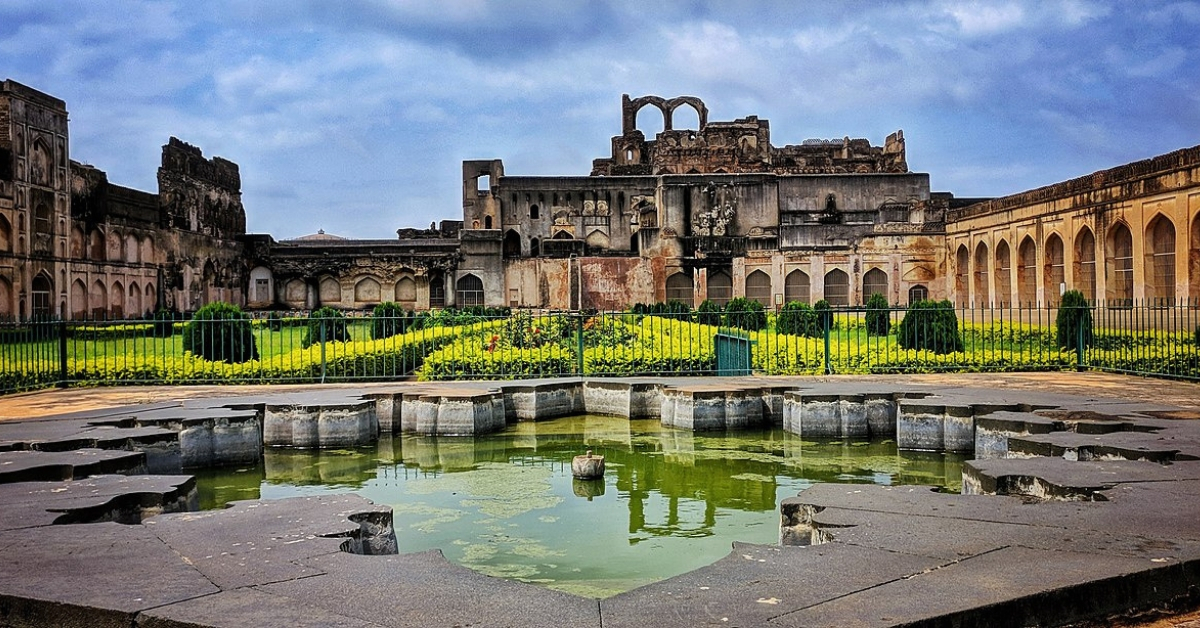
A rhombus shaped fort made of red-laterite stone, the Bidar fort in Bidar district of Karnataka is an important heritage site. Today, most of the fort lies in ruins but the area and architecture is as mesmerising as it would have been in the yesteryears.
The fort was built by Ahmad Shah of the Bahman dynasty in 1347 in Persian style-architecture. A triple-moated wall and an imposing gateway suggest that the fort was vulnerable to enemy attacks. Though built by a Bahmani ruler, the fort was occupied by Prince Ulugh Khan of the Tughluq dynasty (he later became Muhammad bin Tughlaq, the sultan of Delhi) and recaptured by Sultan Ala-ud-Din Bahman Shah with the establishment of the Bahmani Sultanate in 1347.
From the Telangana capital, you can either take a flight or opt to drive to Bidar which will take you a little over 3 hours
What to do:
Don’t miss the architectural wonders of the fort which give you sneak-peak into Hyderabad’s history. Bidar was a part of Hyderabad until 1956 when the city was partitioned and Bidar became a part of the Mysore state (now Karnataka).
4. Elgandal Fort, Telangana:

This 11th century fort belongs to the Kakatiya dynasty that ruled South India between 1083 and 1323 AD, before being conquered by the Delhi Sultanate. The grand fort, situated atop the Elagandal khilla hill is surrounded by moats, 16 ft wide and 13 ft deep and filled with crocodiles to protect the fort in case of intrusion.
Getting captured by the warrior kings Musunuri Nayaks in the 16th century and then by the Mughal Empire, the fort has many stories of various dynasties to tell. During the Nizam reign, the Elgandal (originally known as Veligundula) was their headquarters before the district headquarter was shifted to Karimnagar in the 20th century.
The fort is about 180 km away from Hyderabad and is easily accessible by road.
What to do:
Make sure to visit the Brindavan tank which was built by Zafar-ud-Doula in 1754. It is located just outside the eastern gateway of the fort and has minarets that oscillate when you shake it.
5. Maluti Temples – Jharkhand:
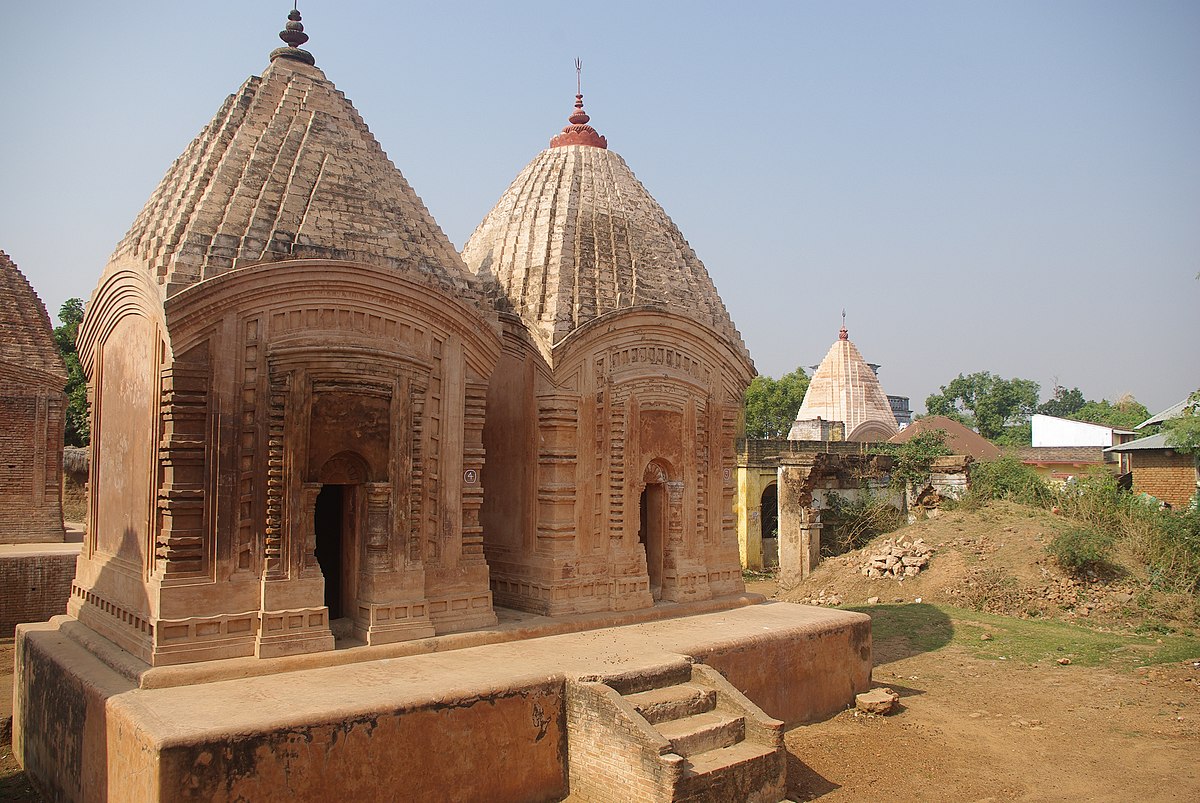
Sometime in the 15th century, Alauddin Hussain Shah, the Sultan of Bengal was hunting in the Maluti village in the Santhal Pargana region of what is today, Jharkhand. During his trip, his beloved pet falcon called Baj got separated from the Sultan who was left heartbroken. A local boy, Basanta Roy, was in the area when he realised what had happened. Somehow, he succeeded in bringing the falcon back to Shah and as a token of gratitude, the Sultan gifted the young boy a considerable area around Maluti.
In the time to come, the young boy became famous as Raja Baj Basanta and between the 17th and 19th century, his descendants built a complex of 108 Terracotta temples in their land. Over the centuries, the Basanta family lost a lot of their fortunes and as many as 36 of the temples were destroyed. But 72 survive today, known as the Maluti temples.
277 km from the State capital Ranchi, Dumka district where the temples are located, is accessible via road and railway. It is about 7 hours’ drive from Ranchi.
What to do:
Do visit the temples of the local deities as well as the family deity of the Baj Basanta dynasty in the temple complex. The exteriors have inscriptions about the details of the temples while the interiors have depictions of various scenes from the Mahabharata and Ramayana epics.
6. Sisupalgarh – Odisha:
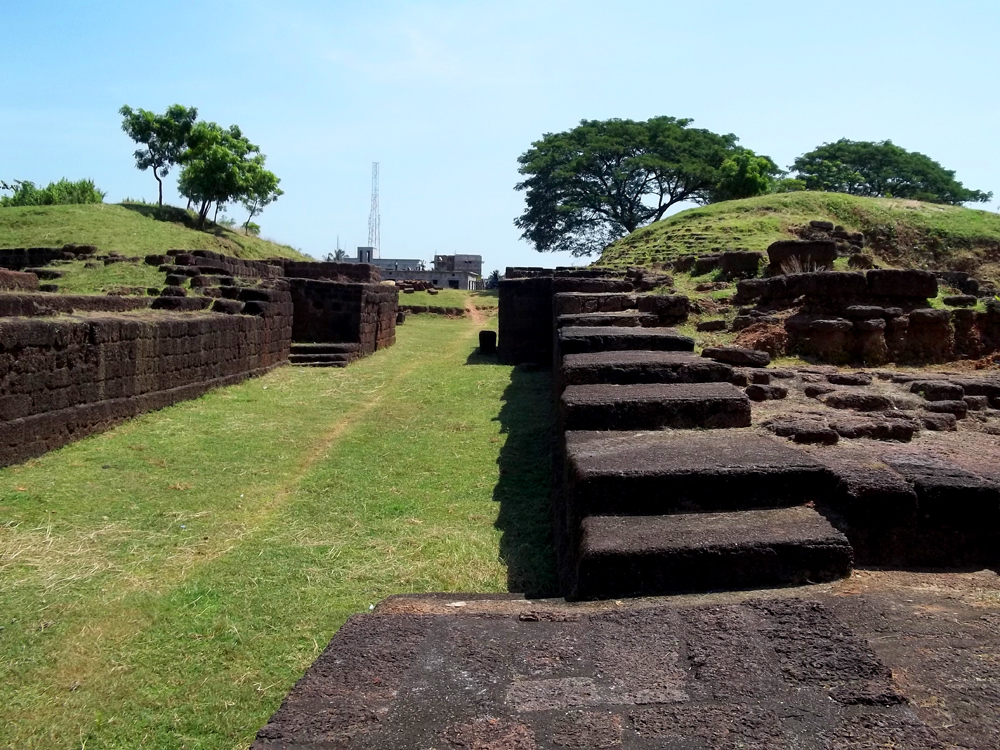
One of the largest preserved historic fortifications in India, the Sisupalgarh was originally presumed to have flourished between the 3rd century BC to the 4th century AD. Further investigations by M Smith and R Mohanty revealed that the city actually flourished around 5th century BC and lasted even after the 4th century AD.
Among the ruins are a part of a quadratic defensive wall, which dates back to 2000 years! Apart from this marvellous defense system, the elephant caves and the queen’s palace point towards the city being an ancient capital!
Just over 10 km from the state capital Bhubaneswar, you can easily drive to the fort ruins.
What to do:
Don’t miss the ruins of pillars in Sisupalgarh. When the site was discovered by archaeologist BB Lal, it was covered in wilderness. Intensive study of the ruins by archaeologists and historians have revealed fascinating facts about the fortification and each one of its aspects is worth observing very closely.
7. Sarkhej Roza – Gujarat

A comfortable 9 km drive ride from the city of Ahmedabad is Sarkhej Roza which is regarded as the ‘Acropolis of Ahmedabad’. Swiss-French architect Le Corbusier compared the Sarkhej Roza mosque to the iconic Acropolis in Athens. The construction of the tomb began in 1445 AD as a memorial for Shaikh Ahmed Khattu Ganj Baksh, a Sufi saint and a close friend of Ahmed Shah, who ruled Ahmedabad and the neighbouring regions between 1411 and 1442. The Roza, that combines Indian and non-Indian styles of ancient architecture was built by Persian brothers, Azam and Muazzam Khan.
The ringed domes, a profusion of pillars and brackets follow the west Asian, Islamic style although some example of such architectural styles can also be found in India before Shah’s time. At the same time, a majority of the motifs of the heritage site have Hindu designs.
What to do:
Check out the Sarkhej lake, the mingling of architectural styles and the tombs of Shaikh Ahmed Khattu Ganj Baksh as well as those of Sultan Mahmud Begada, his son Muzaffar Shah II and Shah’s wife, Rajbai.
8. Murud Janjira Fort – Maharashtra:
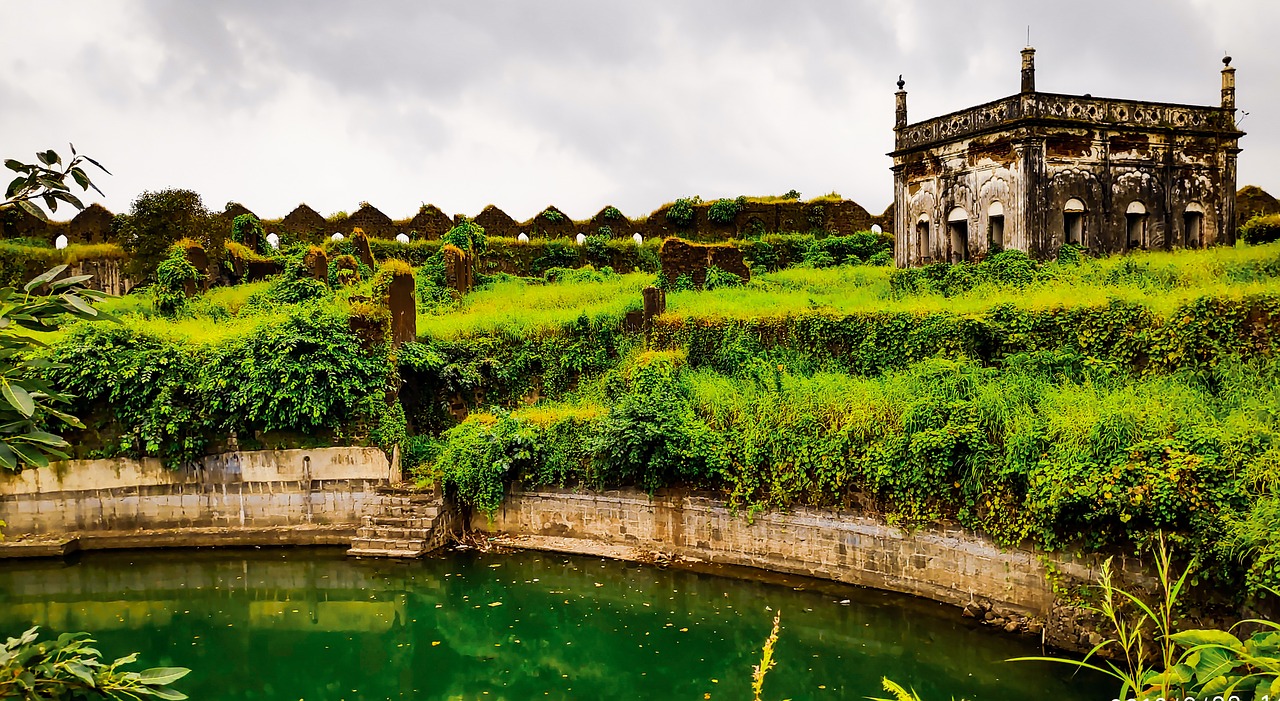
In the 16th century, Rambhau Patil, from the fishermen tribe of Maharashtra, requested the Sultan of the Ahmednagar to have an island built off the Konkan coast for fishermen like him to live peacefully without the threat of pirates in the sea. Thus was born the Murud- Janjira fort.
For its defence, the fort had 572 cannons, 26 rounded bastions as also palaces, quarters for officers, places of worship as also two small freshwater lakes. A palace, the bastions and some of the canons are still intact and is you are planning an outing in or near Konkan, Murud-Janjira should definitely be on your list.
Regular buses and trains from Mumbai to Murud make the commute quite easy. The Konkan strip is also a very pleasant drive. Once in Murud, you can take the daily ferry to the fort.
What to do:
You can see the tall walls of the fort entrance from 40 feet away. Soak in the history that is preserved in the palaces, bastions and cannons on the island.
9. Kalinjar, Uttar Pradesh:

A fort that has served as a place of residence for several dynasties ruling Bundelkhand, Kalinjar literally means ‘the destroyer of time’. Many an invader tried to conquer the mighty fort but only a handful succeeded. Firishta, a Persian historian concludes that the heritage site was built in the 7th century AD, although it came to prominence only during the Chandela rule that lasted between the 9th and the 13th century AD.
A considerable part of the fort is intact even today and offers you a tale of the bygone era of conquerors and invaders who claimed ownership over the fort. A visit to Kalinjar is a travel back in time itself, one that cannot be missed if you are planning a trip to Uttar Pradesh.
The closest airport to Kalinjar is at Khajuraho (about 130 km away) and the historic town is also well-connected by rail and road.
You may also like: Of Legends & Legacy: The Unique Link Between India & Cambodia’s Angkor Wat!
What to do:
A visit to Kalinjar is incomplete without making a trip to Khajuraho which is said to have been protected by the might of the Kalinjar fort during Mahmud Ghazni’s invasions in the 11th century AD.
10. Eran, Madhya Pradesh:
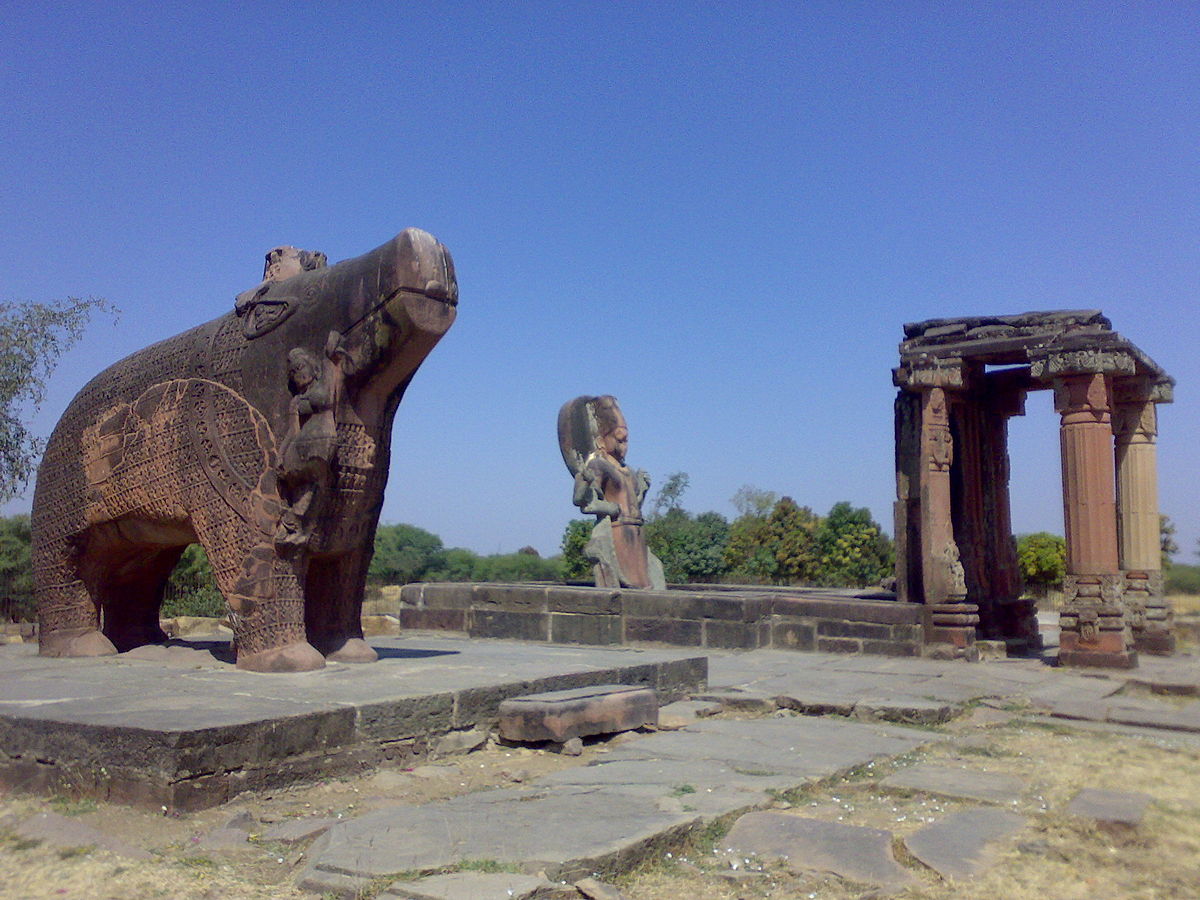
Eran, an ancient city in Madhya Pradesh, finds mention in ancient Hindu and Buddhist texts as well as on coins and inscriptions from the nearby sites. Today, many yesteryear monuments are preserved in the town. It was Alexander Cunningham, a British engineer, who first noticed the antiquities of the town and studied them.
From temples to pillars and animal statue, Eran is a collection of several monuments of historic importance. The temples in the town were built 5th and 6th century AD. Inscription stones are concluded to be of the Gupta Empire- a visit to the heritage site is a delightful peek into history.
Sagar, the district that houses Eran is well-connected by road and rail to the state capital, Bhopal. It takes a little over 3 hours on the road to reach Eran from Bhopal.
What to do:
Make sure you spend enough time in the ancient city to observe every temple with its 7th century AD architectural style and building materials.
11. Rabdentse – Sikkim:

In the scenic state of Sikkim, wrapped in the magnificent East Himalayan ranges are ruins of a city that once flourished as the capital of the Namgyal dynasty. Today, only a few “chunky wall stubs” of the ancient city remain but even those hold the fascinating stories of the dynasty, their successions, jealousy and revenge that boiled over after the death of Chogyal (King of Sikkim) Phuntsog Namgyal, the ruler who shifted his capital and built the city of Rabdentse.
Along with the remains of the walls, you can also see the Three Chortens- the place of worship of the former royal family that ruled Sikkim till the Gurkha invasion of 1814. A stone throne, consisting of three stones and called the ‘Namphogang’ is also in good condition till date. It was from this throne that the judge would give his final judgement during the reign of the Chogyal.
The ancient city is 3 km away from the town of Pelling, 125 km away from the capital city of Gangtok
What to do:
While you are here, don’t miss out on the marvellous Himayalan treks of the North-East. From the trees to the animals and birds, each species holds a unique charm in the wonderful state of Sikkim.
12. Unakoti – Tripura:
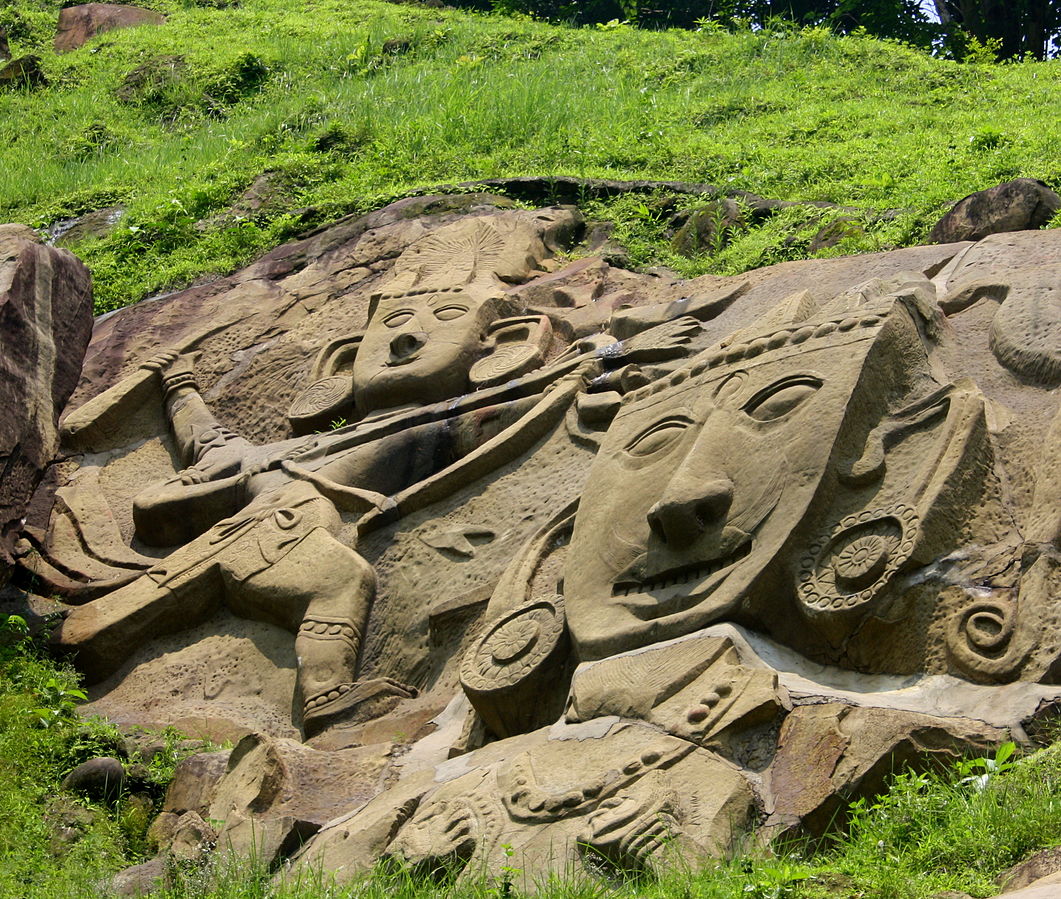
“The ancient site (whose name means one less than a crore, or 99,99,999 — a crore in Bengali is called Koti) has gigantic sculptures of Hindu deities that have been chiseled out of a hill and that are believed to date back to between the 8th and 9th centuries. Most of them are about 30 to 40 feet high and have an earthy rawness that is more akin to the tribal style of art than to the classical Indian style,” writes Sanchari Pal about the iconic Unakoti in Tripura.
One legend says that Kalu Kumhar, a devotee of Shiva and Parvati wanted to accompany the divine couple when they were passing through Tripura. While Shiva was sceptical about this, Parvati put forth a condition. If Kumhar were to make 1 crore images of Shiva overnight, he could accompany them. By dawn, Kumhar fell short of just one image and thus, the name Unakoti.
You can read in detail about these fascinating structures here.
You may also like: Hindu Pashtuns: How One Granddaughter Uncovered India’s Forgotten Links to Afghanistan
The closest railway station to Unakoti is Kumarghat, 20 km away. You can book a taxi or a private vehicle from there to the location of the ancient sculptures. Kumarghat is connected to Agartala in Tripura and Lumding in Assam.
What to do:
While you marvel at the age-old sculptures and carvings, don’t forget to spend some quality time in the lush forests of Tripura. The flora and fauna of the North-East have a charm unique to their own and you must not miss out on the marvels stored in the jungles there.
(Edited by Saiqua Sultan)
Like this story? Or have something to share? Write to us: [email protected], or connect with us on Facebook and Twitter.
If you found our stories insightful, informative, or even just enjoyable, we invite you to consider making a voluntary payment to support the work we do at The Better India. Your contribution helps us continue producing quality content that educates, inspires, and drives positive change.
Choose one of the payment options below for your contribution-
By paying for the stories you value, you directly contribute to sustaining our efforts focused on making a difference in the world. Together, let’s ensure that impactful stories continue to be told and shared, enriching lives and communities alike.
Thank you for your support. Here are some frequently asked questions you might find helpful to know why you are contributing?


This story made me
- 97
- 121
- 89
- 167











